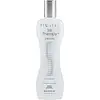What's inside
What's inside
 Benefits
Benefits

 Concerns
Concerns

 Ingredients Side-by-side
Ingredients Side-by-side

Sd Alcohol 40-B
AstringentWater
Skin ConditioningAcrylates/Hydroxyesters Acrylates Copolymer
Va/Crotonates/Vinyl Neodecanoate Copolymer
Bisamino PEG/PPG-41/3 Aminoethyl Pg-Propyl Dimethicone
Algae Extract
EmollientAloe Barbadensis Leaf Extract
EmollientAnthemis Nobilis Flower Extract
MaskingSimmondsia Chinensis Leaf Extract
HumectantRosmarinus Officinalis Extract
AntimicrobialPEG-12 Dimethicone
Skin ConditioningPanthenol
Skin ConditioningAminomethyl Propanol
BufferingParfum
MaskingAmyl Cinnamal
PerfumingBenzyl Alcohol
PerfumingBenzyl Benzoate
AntimicrobialHexyl Cinnamal
PerfumingHydroxycitronellal
PerfumingLinalool
PerfumingButylphenyl Methylpropional
PerfumingSd Alcohol 40-B, Water, Acrylates/Hydroxyesters Acrylates Copolymer, Va/Crotonates/Vinyl Neodecanoate Copolymer, Bisamino PEG/PPG-41/3 Aminoethyl Pg-Propyl Dimethicone, Algae Extract, Aloe Barbadensis Leaf Extract, Anthemis Nobilis Flower Extract, Simmondsia Chinensis Leaf Extract, Rosmarinus Officinalis Extract, PEG-12 Dimethicone, Panthenol, Aminomethyl Propanol, Parfum, Amyl Cinnamal, Benzyl Alcohol, Benzyl Benzoate, Hexyl Cinnamal, Hydroxycitronellal, Linalool, Butylphenyl Methylpropional
Cyclopentasiloxane
EmollientCyclotetrasiloxane
EmollientDimethiconol
EmollientCyclohexasiloxane
EmollientAlcohol Denat.
AntimicrobialC12-15 Alkyl Benzoate
AntimicrobialPhenoxyethanol
PreservativePanthenol
Skin ConditioningEthyl Ester Of Hydrolyzed Silk
Skin ConditioningParfum
MaskingBenzyl Benzoate
AntimicrobialHexyl Cinnamal
PerfumingLinalool
PerfumingAlpha-Isomethyl Ionone
PerfumingCitronellol
PerfumingGeraniol
PerfumingHydroxycitronellol
PerfumingButylphenyl Methylpropional
PerfumingEugenol
PerfumingCyclopentasiloxane, Cyclotetrasiloxane, Dimethiconol, Cyclohexasiloxane, Alcohol Denat., C12-15 Alkyl Benzoate, Phenoxyethanol, Panthenol, Ethyl Ester Of Hydrolyzed Silk, Parfum, Benzyl Benzoate, Hexyl Cinnamal, Linalool, Alpha-Isomethyl Ionone, Citronellol, Geraniol, Hydroxycitronellol, Butylphenyl Methylpropional, Eugenol
Ingredients Explained
These ingredients are found in both products.
Ingredients higher up in an ingredient list are typically present in a larger amount.
Benzyl Benzoate is usually created from the condensation of benzoic acid and benzyl alcohol. It is used as a preservative, solvent, and has a floral/balsamic scent in large amounts.
As a preservative, Benzyl Benzoate works against bacteria and fungus. It is often used to treat scabies and lice in medicine.
Solvents are used to keep ingredients together in a product. They can help dissolve ingredients to stable bases or help evenly distribute ingredients throughout the product.
Due to its fragrance, Benzyl Benzoate can be sensitizing and may cause contact dermatitis. It is a known EU allergen. We recommend speaking with a professional if you have any concerns.
Benzyl Benzoate can be naturally found in cranberries and peaches.
Learn more about Benzyl BenzoateButylphenyl Methylpropional is a synthetic fragrance. You might know it as "lilial". The scent of this ingredient is floral-like and similar to the scent of lily flowers.
In March of 2022, the EU banned this ingredient in both rinse-off and leave-on products. This is because research found Butylphenyl Methylpropional to disrupt fertility in rats.
This ingredient is also a known EU allergen, meaning it is likely to cause an allergic reaction. Irritated skin can be damaging.
We always recommend speaking with a professional if you have any concerns or questions about this ingredient.
Learn more about Butylphenyl MethylpropionalHexyl Cinnamal is a fragrance ingredient with a similar scent to jasmine. It can be naturally found in chamomile essential oil.
This ingredient is a known EU allergen and may sensitize the skin. The EU requires this ingredient to be listed separately on an ingredients list.
Hexyl Cinnamal is not water soluble but is soluble in oils.
Learn more about Hexyl CinnamalLinalool is a fragrance and helps add scent to products. It's derived from common plants such as cinnamon, mint, citrus, and lavender.
Like Limonene, this ingredient oxidizes when exposed to air. Oxidized linalool can cause allergies and skin sensitivity.
This ingredient has a scent that is floral, spicy tropical, and citrus-like.
Learn more about LinaloolPanthenol is a common ingredient that helps hydrate and soothe the skin. It is found naturally in our skin and hair.
There are two forms of panthenol: D and L.
D-panthenol is also known as dexpanthenol. Most cosmetics use dexpanthenol or a mixture of D and L-panthenol.
Panthenol is famous due to its ability to go deeper into the skin's layers. Using this ingredient has numerous pros (and no cons):
Like hyaluronic acid, panthenol is a humectant. Humectants are able to bind and hold large amounts of water to keep skin hydrated.
This ingredient works well for wound healing. It works by increasing tissue in the wound and helps close open wounds.
Once oxidized, panthenol converts to pantothenic acid. Panthothenic acid is found in all living cells.
This ingredient is also referred to as pro-vitamin B5.
Learn more about PanthenolParfum is a catch-all term for an ingredient or more that is used to give a scent to products.
Also called "fragrance", this ingredient can be a blend of hundreds of chemicals or plant oils. This means every product with "fragrance" or "parfum" in the ingredients list is a different mixture.
For instance, Habanolide is a proprietary trade name for a specific aroma chemical. When used as a fragrance ingredient in cosmetics, most aroma chemicals fall under the broad labeling category of “FRAGRANCE” or “PARFUM” according to EU and US regulations.
The term 'parfum' or 'fragrance' is not regulated in many countries. In many cases, it is up to the brand to define this term.
For instance, many brands choose to label themselves as "fragrance-free" because they are not using synthetic fragrances. However, their products may still contain ingredients such as essential oils that are considered a fragrance by INCI standards.
One example is Calendula flower extract. Calendula is an essential oil that still imparts a scent or 'fragrance'.
Depending on the blend, the ingredients in the mixture can cause allergies and sensitivities on the skin. Some ingredients that are known EU allergens include linalool and citronellol.
Parfum can also be used to mask or cover an unpleasant scent.
The bottom line is: not all fragrances/parfum/ingredients are created equally. If you are worried about fragrances, we recommend taking a closer look at an ingredient. And of course, we always recommend speaking with a professional.
Learn more about Parfum